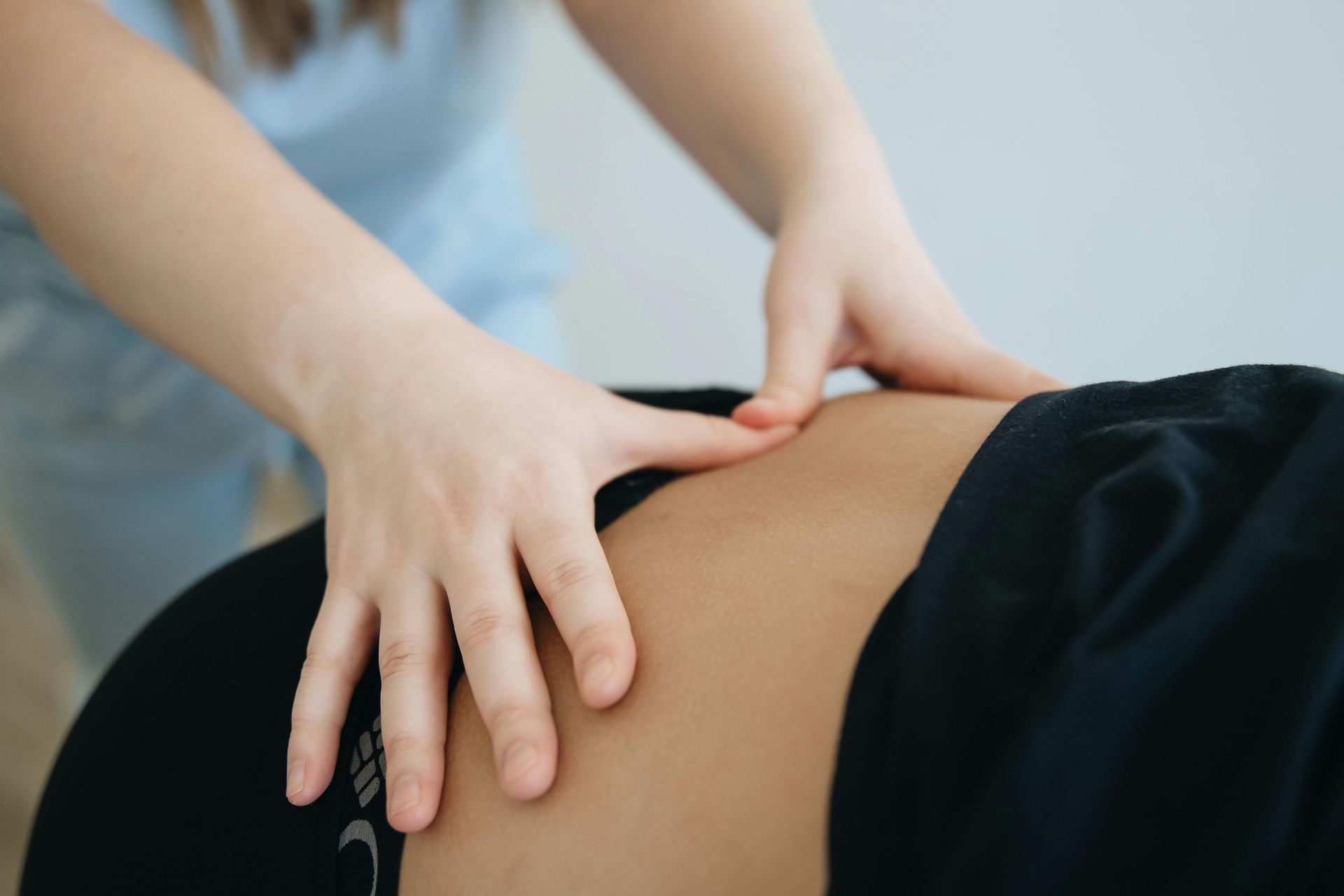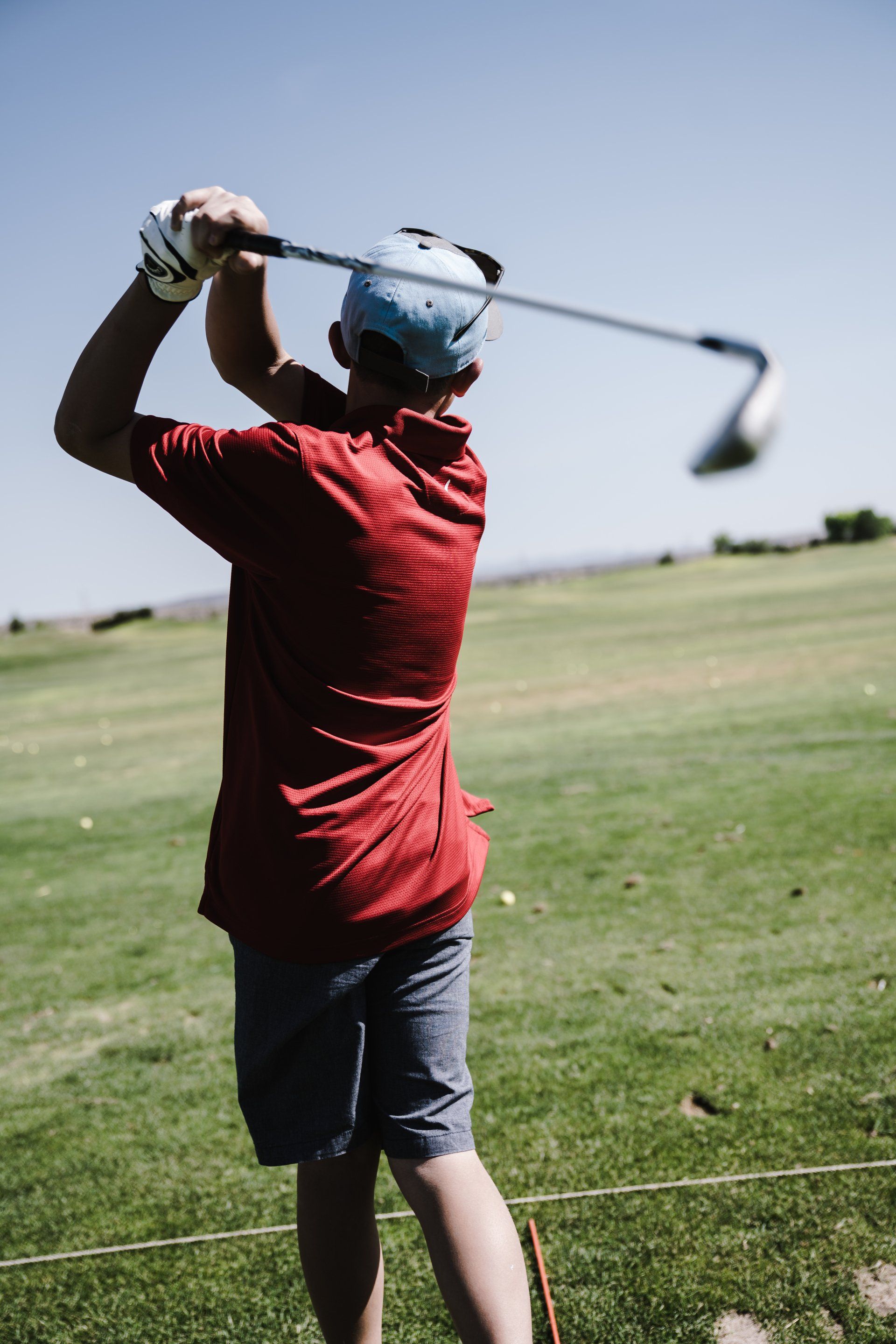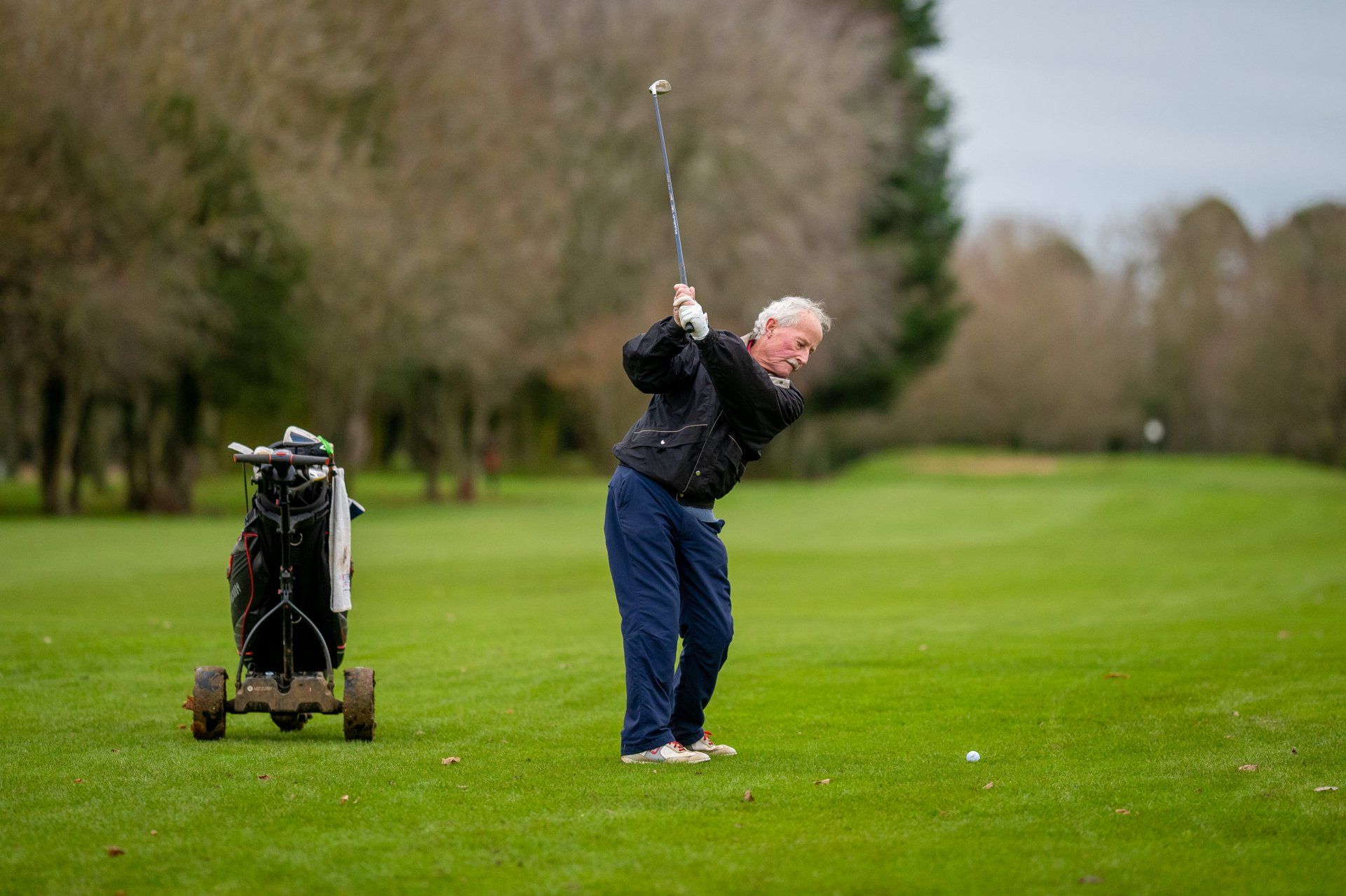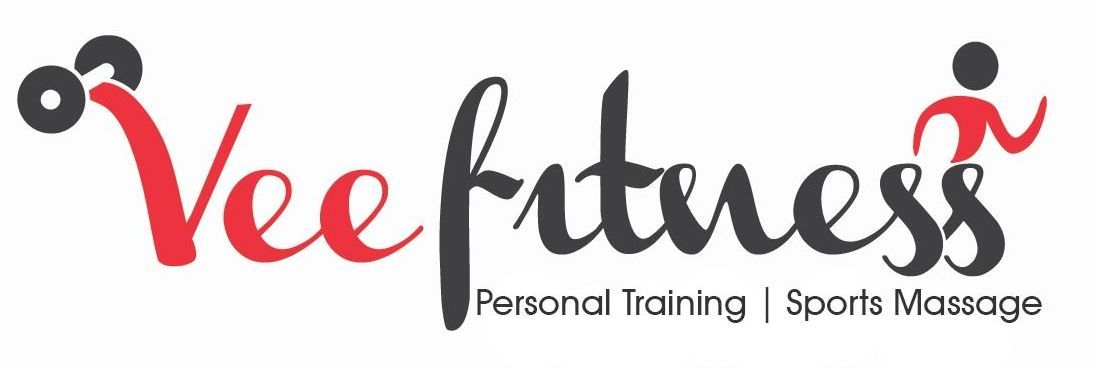Blog

Training for an endurance event, whether it’s a half-marathon, triathlon, or long-distance cycling challenge, demands consistent effort and smart recovery. While training builds endurance, it also causes muscle fatigue, tightness, and micro-injury that can impact performance. At Vee Fitness Sports Massage in Hendon, we help athletes and recreational runners prepare their bodies safely and effectively. Here’s what the science says about how to prepare your body for endurance training and how massage can support you every step of the way. 1. Why Recovery Matters for Endurance Training Endurance training involves repetitive, high-volume movements that stress muscles, joints, and connective tissues. Without adequate recovery, this stress accumulates and leads to fatigue, decreased performance, and potential overuse injuries. A meta-analysis of recovery interventions found that massage is one of the most effective methods to reduce delayed onset muscle soreness (DOMS) and perceived fatigue after exercise (1). Similarly, another large review confirmed that while massage does not directly enhance measurable performance outcomes (such as sprint times), it improves flexibility and short-term muscle recovery — both key factors in endurance performance (2). 2. When to Schedule Massage in Your Training Cycle Timing matters when it comes to sports massage. Strategic scheduling helps you recover faster, reduce injury risk, and maintain training intensity. During training blocks: Massage every 1–2 weeks can help prevent tightness from building up. After long runs or intense sessions: A gentle recovery massage within 24–48 hours aids tissue repair and reduces soreness (3). Before an event: A lighter, stimulating massage 2–3 days before a race helps loosen muscles without causing post-massage soreness. After an event: A recovery massage 24–72 hours post-race can accelerate healing and reduce stiffness. Massage helps manage muscular tension, improve circulation, and promote the parasympathetic response — encouraging relaxation and better sleep, which are essential for full recovery (4). 3. Massage Techniques That Support Endurance Athletes At our Hendon sports massage clinic, we often use a combination of techniques tailored to your training phase: Effleurage and petrissage: To enhance circulation and remove metabolic waste. Myofascial release: To improve tissue mobility and elasticity. Trigger point therapy: To address localised areas of tightness or referred pain. Active release techniques: To restore full range of motion in overworked muscles. Evidence supports these methods for improving muscle flexibility, decreasing pain perception, and reducing markers of muscle damage (5)(6). 4. Combine Massage with Evidence-Based Recovery Habits Massage is most effective when paired with a holistic recovery strategy: Sleep: Aim for 7–9 hours per night; deep sleep stages promote growth hormone release critical for tissue repair (7). Nutrition: Post-exercise meals rich in protein and carbohydrates enhance glycogen replenishment and muscle recovery. Hydration: Rehydrate with electrolytes to maintain blood volume and nutrient delivery. Active recovery: Light aerobic sessions, foam rolling, and mobility work between training days promote circulation without adding stress. Combining these strategies with regular sports massage produces the best recovery outcomes (8). 5. Common Mistakes Before a Race Even experienced athletes can make recovery errors leading up to race day: ❌ Getting a deep-tissue massage the day before a race — this may cause temporary soreness. ✅ Instead, opt for a lighter, flushing massage 2–3 days before to optimise tissue readiness. ❌ Skipping hydration or neglecting rest during taper week. ✅ Prioritise sleep, nutrition, and gentle movement instead of hard training sessions. A structured pre-event recovery plan helps ensure you arrive at the start line fresh and injury-free. Endurance performance depends as much on recovery and preparation as on the miles you log in training. At Vee Fitness Sports Massage in Hendon, we specialise in helping athletes and runners optimise their preparation with targeted massage, mobility coaching, and personalised recovery plans. Whether you’re training for your first 10K or a full marathon, our evidence-based approach helps you train smarter — not just harder. Book your Hendon sports massage today and get your body race-ready. References: 1) Poppendieck, W., et al. (2016). Massage and performance recovery: a meta-analytical review. British Journal of Sports Medicine, 50(18), 1292–1301. https://doi.org/10.1136/bjsports-2015-095357 2) Guo, J., et al. (2020). Effects of massage on delayed onset muscle soreness and recovery of muscle function: a systematic review and meta-analysis. Frontiers in Physiology, 11, 1228. https://pubmed.ncbi.nlm.nih.gov/32426160/ 3) Weerapong, P., et al. (2005). The mechanisms of massage and effects on performance, muscle recovery and injury prevention. Sports Medicine, 35(3), 235–256. 4) Arroyo-Morales, M., et al. (2011). Psychophysiological effects of massage after exercise. Journal of Strength and Conditioning Research, 25(2), 532–539. 5) Crane, J. D., et al. (2012). Massage therapy attenuates inflammatory signaling after exercise-induced muscle damage. Science Translational Medicine, 4(119), 119ra13. 6) Shojaei, M., et al. (2024). Effects of sports massage on muscle performance and recovery: a systematic review and meta-analysis. Journal of Bodywork & Movement Therapies, 38, 100–113. 7) Fullagar, H. H. K., et al. (2015). Sleep and athletic performance: the effects of sleep loss on exercise performance and recovery. Sports Medicine, 45(2), 161–186. Dupuy, O., et al. (2018). An evidence-based approach for choosing post-exercise recovery techniques to reduce markers of muscle damage, soreness, fatigue, and inflammation: a systematic review with meta-analysis. Frontiers in Physiology, 9, 403.

If you spend your workday at a desk, you’ve probably felt that familiar tightness in your neck, shoulders, or lower back. Long periods of sitting cause muscle tension, reduced circulation, and postural imbalances — all of which can lead to chronic pain over time. At our Hendon sports massage clinic, we help desk workers every week who are dealing with stiffness, tension headaches, and reduced mobility. This article explains how massage therapy can help — and what the science says about managing desk-related pain effectively. 1. Why Sitting Hurts: The Science Behind Desk Pain Modern office work demands sustained static posture. This leads to muscle imbalances, especially tightness in the hip flexors, upper trapezius, and pectorals, and weakness in the glutes and deep neck flexors. A 2020 study on female desk workers found that those with low back pain had reduced hip movement and increased lumbar motion, showing that poor movement patterns contribute to discomfort (1). Other studies have consistently shown a high prevalence of neck and shoulder pain in office-based workers due to static postures, repetitive tasks, and psychosocial stress (2)(3). 2. What Research Says About Massage for Desk Workers Massage therapy is widely used for managing musculoskeletal discomfort in office workers. Evidence shows that it can provide both physical and psychological benefits: A randomised controlled trial found that manual therapy (including massage) was feasible and effective in reducing work-related neck and shoulder pain (4). Another systematic review concluded that massage offered immediate relief for neck and shoulder pain compared with no treatment, though results were similar to other active therapies (like stretching) in the longer term (5). A workplace trial using massage chairs demonstrated reduced neck and shoulder pain intensity and improved range of motion among office workers (6). In short: massage can reduce tension, ease discomfort, and promote better posture when used consistently — especially as part of a broader ergonomic plan. 3. Massage + Movement: The Best Combination Massage helps release tight muscles, but for lasting change, you need to restore proper movement patterns. Evidence suggests that combining massage with stretching, strengthening, and postural awareness leads to longer-term improvements (7). Try these simple changes between sessions: Stand up every 30–45 minutes for micro-breaks. Perform gentle neck and shoulder rolls several times a day. Stretch the hip flexors and chest regularly. Strengthen glutes and upper back muscles to offset sitting posture. At our sports massage clinic in Hendon, we often integrate corrective mobility advice alongside hands-on treatment to support long-term postural health. 4. Psychological and Performance Benefits Desk-related pain isn’t just physical. Prolonged tension can raise cortisol levels, reduce concentration, and affect productivity. Massage therapy has been shown to reduce anxiety, improve mood, and lower stress hormones (8). Regular massage therefore helps not only your muscles — but also your overall mental wellbeing and work performance. 5. How Often Should You Have a Massage? For persistent neck/shoulder or lower-back tension: every 1–2 weeks initially. For general wellbeing and maintenance: every 3–4 weeks can help prevent symptoms returning. Combine sessions with ergonomic adjustments and daily movement for best results. Remember: preventing stiffness is easier (and cheaper) than treating chronic pain. Long hours at a desk don’t have to mean constant pain. With a combination of evidence-based massage therapy, postural correction, and movement habits, you can feel looser, stand taller, and work more comfortably. If you’re in North London or Hendon, book a desk-worker massage session today. Our expert therapists specialise in sports massage for office workers and can tailor a plan to help you fix back and neck pain for good. References: Kudo, S., et al. (2020). Differences in trunk and hip movement between female desk workers with and without low back pain. Journal of Physical Therapy Science, 32(11), 728–733. https://pubmed.ncbi.nlm.nih.gov/33132530/ Cagnie, B. et al. (2007). Individual and work-related risk factors for neck pain among office workers: a cross-sectional study. European Spine Journal, 16(5), 679–686. Brandt, M., et al. (2004). Work-related neck and shoulder pain among office workers: prevalence and risk factors. Occupational Medicine, 54(2), 102–108. Hartvigsen, J., et al. (2013). Feasibility of manual therapy for work-related neck and shoulder pain: a pilot randomized trial. Chiropractic & Manual Therapies, 21(1), 5. https://pmc.ncbi.nlm.nih.gov/articles/PMC5080143/ Furlan, A. D., et al. (2015). Massage for mechanical neck disorders: a systematic review. Cochrane Database of Systematic Reviews, (9), CD004871. https://pmc.ncbi.nlm.nih.gov/articles/PMC3600270/ Choi, E., et al. (2023). Effect of a massage chair on neck and shoulder pain in office workers: a randomized controlled clinical trial. Journal of Back and Musculoskeletal Rehabilitation, 36(5), 961–969. https://doi.org/10.3233/BMR-220221 Bervoets, D. C., et al. (2015). Massage therapy has short-term benefits for people with common musculoskeletal disorders: a systematic review. Journal of Physiotherapy, 61(3), 106–116. Field, T. (2016). Massage therapy research review. Complementary Therapies in Clinical Practice, 24, 19–31.

After a tough gym session, recovery is just as important as training itself. Without effective recovery, muscles remain tight, fatigue builds, and performance declines. At our Hendon sports massage clinic, we see many gym-goers struggling with soreness and stiffness that could easily be managed through evidence-based recovery strategies — including massage, mobility work, and sleep optimisation. 1. Understand Delayed Onset Muscle Soreness (DOMS) DOMS is the muscle stiffness and tenderness that typically occurs 24–72 hours after intense or unfamiliar exercise. It’s caused by microtrauma in muscle fibres leading to inflammation and temporary loss of strength. A systematic review of 99 studies found that massage was one of the most effective recovery strategies for reducing DOMS and perceived fatigue after exercise (1). Similarly, another meta-analysis confirmed that massage improves flexibility and muscle soreness, even if it doesn’t directly enhance strength or power performance (2). 2. Why Sports Massage Helps Research supports sports massage as a valuable tool for gym recovery: Massage reduces blood markers of muscle damage (such as creatine kinase) and inflammation (1). It improves joint range of motion and flexibility, allowing more efficient movement patterns (2). It has psychological benefits — decreasing anxiety and improving readiness to train again (3). This makes post-gym massage a key element of an evidence-based recovery plan. 3. Combine Massage with Active Recovery Massage works best when paired with active recovery — low-intensity movement such as walking, swimming, or mobility drills. These activities promote blood flow and reduce residual stiffness. Research consistently shows that the most effective recovery programs are multifactorial, combining massage, gentle activity, and good sleep hygiene (1). 4. Nutrition, Hydration, and Sleep: The Unsung Heroes Massage helps the muscles, but recovery happens systemically. To maximise your sports massage session: Rehydrate properly after your workout. Consume a balanced meal rich in protein and carbohydrates within 1–2 hours post-training. Prioritise 7–9 hours of quality sleep, as growth hormone release peaks during deep sleep and aids muscle repair. 5. When and How Often to Book a Massage After heavy gym sessions, book a sports massage within 24–48 hours. For regular exercisers (3–5 sessions per week), a massage every 1–2 weeks is ideal for prevention and recovery. For moderate exercisers, monthly sessions may suffice. After a sports massage, allow a rest period of around 24 hours before heavy training, since soft tissues may be temporarily more pliable (4). Effective recovery is what separates consistent athletes from injured ones. By combining smart training with evidence-based sports massage, you’ll recover faster, move better, and train harder — without setbacks. If you’re based in Hendon or North London, book your sports massage in Hendon today and experience how professional recovery can transform your performance. References: 1) Poppendieck, W. et al. (2016). Massage and performance recovery: a meta-analytical review. British Journal of Sports Medicine, 50(18), 1292–1301. 2) Guo, J. et al. (2020). Effects of massage on delayed onset muscle soreness and recovery of muscle function: a systematic review and meta-analysis . Frontiers in Physiology , 11, 1228. https://pubmed.ncbi.nlm.nih.gov/32426160/ 3) Arroyo-Morales, M. et al. (2011). Psychophysiological effects of massage after exercise. Journal of Strength and Conditioning Research , 25(2), 532–539. 4) Katie Bell Physiotherapy. (2023). How long should you rest after a sports massage?

Sports massage is a specialised form of massage therapy designed to support active individuals, whether you're an athlete or someone who enjoys regular physical activity. This type of massage offers numerous benefits that can enhance your performance, aid recovery, and prevent injuries. In this blog post, we'll explore the key benefits of sports massage and how it can be an essential part of your fitness routine. 1. Improved Flexibility and Range of Motion One of the primary benefits of sports massage is its ability to improve flexibility and range of motion. By targeting specific muscle groups and using techniques such as deep tissue manipulation and stretching, sports massage helps elongate muscle fibres and reduce stiffness (1). This can lead to enhanced performance in activities that require flexibility, such as running, cycling, and swimming. 2. Enhanced Recovery from Exercise and Injury Sports massage promotes blood flow, which helps flush out toxins like lactic acid and reduces inflammation (2). This process accelerates recovery from intense workouts and injuries, allowing you to return to your peak condition more quickly. Regular sports massage can also minimise muscle soreness and prevent overuse injuries (3) 3. Reduced Muscle Tension and Pain Muscle tension and pain are common issues for active individuals. Sports massage targets tight areas and trigger points, providing immediate relief and improving overall mobility (4). This can be particularly beneficial for preventing injuries caused by muscle imbalances and repetitive movements. 4. Improved Circulation Enhanced circulation is another significant benefit of sports massage. By increasing blood flow to the muscles, sports massage helps deliver essential nutrients and oxygen, which are crucial for muscle repair and growth (5). Improved circulation also aids in the removal of metabolic waste products, further supporting recovery. 5. Stress Reduction and Mental Relaxation Physical activity can sometimes lead to mental stress and fatigue. Sports massage not only addresses physical issues but also promotes relaxation and reduces stress (1). The calming effects of massage can help improve your mental well-being, making it easier to stay focused and motivated in your fitness journey. Are you ready to experience the benefits of sports massage? Book your appointment today at Vee Fitness and take the first step towards enhancing your performance and recovery. Visit our website at www.veefitness.co.uk to learn more and schedule your session here . References: 1) Davis, H. L., Alabed, S., & Chico, T. J. A. (2020). Effect of sports massage on performance and recovery: a systematic review and meta-analysis. BMJ Open Sport & Exercise Medicine, 6(1), e000614. doi:10.1136/bmjsem-2019-000614. Available at: BMJ Open Sport & Exercise Medicine 2) Hinge Health. (2025). What Is a Sports Massage and Its Benefits. Available at: Hinge Health 3) Iler, D. (2025). 11 Benefits of Sports Massage: Your Key to Injury Prevention. Available at: Iler Method Massage 4) Kowalska, A. (2024). Top 10 Benefits of Sports Massage for Both Athletes and Non-Athletes. Available at: Fine Tune Allied Healthcare 5) Stebbins, E. (2024). Professional Sports Massage: Evidence-Based Practices Explained. Available at: True Balance Pain Relief

Back pain is a prevalent issue, especially among those leading high-stress corporate lives. However, misconceptions about back pain exercises can hinder effective relief. Let’s debunk five common myths and provide evidence-based insights to guide you on a journey to a pain-free life. Myth 1: High- Intensity Workouts Aggravate Back Pain Contrary to popular belief, high intensity workouts can be beneficial for back pain. Research indicates that tailored, supervised exercises, including high-intensity training, contribute to improved functional capacity and reduced pain (1). Myth 2: Bed Rest is the Best Solution Extended bed rest mat exacerbate back pain. Scientific studies recommend maintain normal daily activities and incorporating gently exercises to enhance recovery and prevent chronicity (2). Myth 3: Specific Exercises Targeting the Back are Ineffective Targeted back exercises are crucial. Evidence suggests that a combination of general fitness activities and specific back exercises yields better outcomes in managing and preventing back pain (3). Myth 4: Pain Equals Damage Experiencing pain during exercises doesn’t necessarily indicate harm. Scientific literature highlights that fear-avoidance beliefs can contribute to chronicity, empathising the importance of graded exposure to activities, even with some discomfort (4). Myth 5: Once Pain is Gone, Exercise is Unnecessary Maintaining a consistent exercise routine is crucial for long-term back health. Studies show that continued exercise helps prevent the recurrence of back pain and enhances overall well-being (5). Remember, an evidence-based approach tailored to your needs is key to busting these common myths and achieving lasting relief from back pain. References: 1) O’Sullivan et al. (2020). Back to basics: 10 facts every person should know about back pain. British Journal of Sports Medicine, 54(12), p698-699. 2) Six myths and misconceptions around lower back pain https://www.kingshealthpartners.org/latest/3744-six-myths-and-misconceptions-around-lower-back-pain 3) Back Pain: Common Myths and what to do when it strikes https://www.physiotherapymatters.co.uk/blog/back-pain-common-myths-and-what-to-do-when-it-strikes/ 4) Busting myths about back pain https://newtonphysio.com/blog/busting-myths-about-back-pain/ Low back pain – Myths vs Fact (Part 2) https://www.chiswick-physio.co.uk/blog/lowbackmythsvsfacts2

Back pain is a common issue, especially for individuals in high corporate jobs who may spend long hours sitting. Unfortunately, some well-intended exercises can exacerbate rather that alleviate back pain. Scientific studies emphasise the importance of addressing this issue to promote effective back pain management. The Mistake: Heavy physical work, improper weightlifting techniques and poor exercise habits are major contributors to back pain (1)(2)(3). Engaging in exercises that involve bending, twisting or using excessive weights can strain the lower back, exacerbating pain instead of relieving it. How to Correct It: 1) Proper form: Ensure exercises are performed with correct form, especially in weightlifting and activities involving bending and twisting. 2) Moderation: Avoid excessive weights and high-impact exercises, focusing on gradual progression. 3) Core Strengthening: Incorporate core-strengthening exercises to provide better support to the spine. 4) Consultation: Seek guidance from a healthcare professional or fitness expert to tailor the exercises to your needs. Remember, while exercises may offer relief incorrect techniques can lead to more harm than good. Tailoring a fitness routine to address specific need and consulting with professionals can significantly contribute to a healthier and pain-free back. References: 1) Heneweer et al. (2011). Physical Activity and Low Back Pain: A Systematic Review of Recent Literature. European Spine Journal, 20(6), p826-845 2) Fares et al. (2020). Low Back Pain Among Weightlifting Adolescents and Young Adults. Cureus, 12(7), e9127 3) 10 Exercises That Cause Back Pain: https://www.sapnamed.com/blog/10-exercise-mistakes-that-cause-back-pain/

Shoulfer strength plays a significant role in improving performance in golf. Here are some ways in which shoulder strength can positively impact your golf game: 1) Increased Clubhead Speed: Strong shoulder muscles allow for a more powerful and efficient golf swing, resulting in increased clubhead speed. This can lead to longer drives and better overall distance on your shots (2). 2) Improved Control: Strong shoulders contribute to better control of the clubhead through impact. This control is essential for accuracy and consistency in your shots (2). 3) Enhanced Rotation: Adequate shoulder strength allows for proper rotation in the backswing, which is crucial for generating power and maintaining a smooth and efficient swing motion (2). 4) Scapular Stability: Strong shoulder muscles, specifically the scapular muscles, provide stability to the shoulder joint, allowing for better control and reduced risk of injury during the golf swing (2). 5) Improved Muscle Power: Strengthening the muscles in your shoulders can increase your muscle power, allowing for more explosive movements in your swing and generating greater force on the ball (1). 6) Injury prevention : Developing shoulder strength helps reduce the risk of shoulder injuries that can occur due to the repetitive nature of the golf swing. Strengthening the muscles around the shoulder joint provides stability and support, minimizing the chances of strain or overuse injuries (2). Incorporating exercises that target the shoulder muscles, such as scapular push-ups, wall slides, Y's and T's, and band pull-aparts, into your fitness routine can help improve shoulder strength and enhance your golf performance (2). It is important to note that a comprehensive strength and conditioning program, guided by professionals, can provide optimal results for golf performance, injury prevention, and overall well-being (3). References: 1) https://journals.lww.com/nsca-jscr/Fulltext/2022/01000/Physical_Determinants_of_Golf_Swing_Performance__A.44.aspx TITLE: Physical Determinants of Golf Swing Performance: A Review 2) https://www.nationalclubgolfer.com/news/golf-fitness-tips-strengthen-shoulders-more-speed/ TITLE: Strengthen your shoulders for more speed - National Club Golfer 3) https://blogs.bmj.com/bjsm/2020/08/12/how-the-best-golfers-in-the-world-are-using-strength-conditioning-to-elevate-their-performance/ TITLE: How the best golfers in the world are using Strength & Conditioning to Elevate Their Performance

Mobility exercises are of great importance while sitting at your desk for prolonged periods. Engaging in regular mobility exercises can have several benefits for your physical well-being and overall health. Here are some key points regarding the importance of mobility exercises at your desk: 1) Counteracting the negative effects of prolonged sitting: Sitting for extended periods can lead to stiffness, muscle imbalances, poor posture, and reduced joint mobility. Mobility exercises help combat these effects by promoting movement, stretching tight muscles, and improving joint range of motion (6). 2) Enhancing posture and reducing aches and pains: Sitting at a desk often involves poor posture, which can contribute to discomfort in the neck, shoulders, back, and hips. Mobility exercises can help improve posture by stretching and strengthening the muscles responsible for maintaining proper alignment (6). Regularly incorporating mobility exercises can alleviate aches and pains associated with sedentary work (7). 3) Increasing flexibility and range of motion: Desk-bound work can lead to decreased flexibility and limited joint mobility. By performing mobility exercises, you can improve your flexibility and increase the range of motion in your joints. This can have a positive impact on your daily movements and overall functional abilities (8). 4) Preventing injuries: Engaging in regular mobility exercises helps maintain joint health and reduces the risk of injuries. Improved mobility and flexibility contribute to better movement mechanics and reduce the likelihood of strains, sprains, and other musculoskeletal issues. Mobility training can also help address mobility limitations resulting from previous injuries or a sedentary lifestyle (10). 5) Alleviating stress and enhancing mental well-being: Incorporating mobility exercises throughout the workday can help reduce stress levels and enhance mental well-being. Movement and physical activity have been shown to boost mood, improve focus, and increase productivity (2)(13). 6) Promoting circulation and preventing sedentary-related health issues: Sitting for prolonged periods can negatively impact circulation and increase the risk of developing health issues such as obesity, cardiovascular disease, and musculoskeletal disorders. Mobility exercises encourage blood flow, which helps combat the negative effects of prolonged sitting and reduces the risk of related health problems (2)(3). By incorporating mobility exercises into your desk routine, you can improve your physical well-being, prevent discomfort, maintain joint health, and enhance your overall quality of life. Remember to consult a healthcare professional or seek guidance if you have any underlying health conditions or concerns before starting an exercise program. Found this helpful? Save for later and SHARE with a friend. Need a mobility plan that actually works? One that addresses the root issues and helps you build long lasting mobility. Contact us with the word MOBILITY . References: 1) TITLE: 6 Exercises You Can Do at Your Desk – Cleveland Clinic https://health.clevelandclinic.org/desk-exercises/ 2) TITLE: The Ultimate 'Deskercise' Routine: Stretches for the Office – Healthline https://www.healthline.com/health/deskercise 3) TITLE: Desk Exercises: How to Do Them and Why They're Important - Insider https://www.insider.com/guides/health/fitness/desk-exercises 4) TITLE: Office Exercises: 30 Exercises to Do at Your Desk - Healthline https://www.healthline.com/health/fitness/office-exercises 5) https://www.nasa.gov/sites/default/files/atoms/files/hq_deskfit_booklet_6.10.2020.pdf 6) https://sunnyhealthfitness.com/blogs/health-wellness/mobility-desk-exercises 7) TITLE: Desk-based exercises - The Chartered Society of Physiotherapy https://www.csp.org.uk/public-patient/keeping-active-healthy/staying-healthy-work/desk-based-exercises 8) https://www.shape.com/best-mobility-exercises-6832528 9) Mobility Exercises: For Flexibility and Performance – Healthline https://www.healthline.com/health/fitness-exercise/joint-mobility-exercises 10) TITLE: Your Guide to Mobility Training — Benefits, Exercises, and More - Shape https://www.shape.com/mobility-training-6828794 11) https://www.healthline.com/health/fitness/thoracic-mobility-exercises 12) https://www.verywellfit.com/joint-mobility-exercises-to-improve-flexibility-5323188 https://www.byrdie.com/what-exercises-can-i-do-while-sitting-at-my-desk

Improving leg strength can have several positive effects on your backswing in golf: 1) Increased Flexibility and Range of Motion: Strengthening your leg muscles, particularly the hip flexors, hamstrings, and glutes, can improve your overall flexibility and range of motion in the hips and lower body (1). This increased flexibility allows for a greater turn and rotation during your backswing, enabling you to generate more power and achieve a longer swing arc. 2) Enhanced Stability and Balance: Leg strength is crucial for maintaining stability and balance throughout the golf swing. Strong leg muscles provide a solid foundation, allowing you to stay grounded and maintain a stable lower body position during the backswing (2). Improved stability and balance contribute to better control over your swing, leading to more consistent ball-striking and accuracy. 3) Improved Weight Transfer: Leg strength plays a significant role in facilitating proper weight transfer during the swing. As you shift your weight from the back leg to the front leg during the downswing, strong leg muscles provide the necessary power and stability for an efficient weight shift (2). This transfer of weight allows you to generate more clubhead speed and power through impact, resulting in longer shots. 4) Increased Clubhead Speed: Leg strength contributes to generating more clubhead speed during the downswing. As you push off the ground with your legs and initiate the rotational movement, the power generated from your leg muscles transfers up through your body and into the club (4). This added speed and power can lead to greater distance off the tee and improved overall swing performance. 5) Improved Overall Performance and Injury Prevention: Developing leg strength through exercises such as squats, lunges, and deadlifts not only benefits your backswing but also enhances your overall performance on the golf course (11). Strong legs provide stability during all phases of the swing, improve weight distribution, and help prevent injuries by supporting the joints and reducing excessive strain on other parts of the body. To improve leg strength specifically for your backswing, you can incorporate exercises that target the major leg muscles, including squats, lunges, deadlifts, leg presses, and plyometric movements, into your fitness routine (8). Additionally, practicing yoga poses that focus on leg strength and flexibility, such as Warrior II and Downward-Facing Dog, can also be beneficial (7). It's important to consult with a fitness professional or golf instructor to ensure that your training program is appropriate for your fitness level and golf goals. If you would like to improve your swing and gain more yardage, please contact us . References: 1) URL: https://golf.com/instruction/2-power-boosting-tips-increase-backswing/ TITLE: 2 power-boosting tips to increase your backswing turn for longer drives 2) URL: https://www.golfdistillery.com/swing-tips/backswing/ TITLE: Golf Backswing - How to Correctly Perform your Backswing (Golf Swing) 3) URL: https://www.youtube.com/watch?v=czu7nCbie1o TITLE: MAKE THE PERFECT GOLF BACKSWING - LOAD BETTER – YouTube 4) URL: https://www.mytpi.com/articles/fitness/the_benefits_of_single_leg_training_for_golfers TITLE: The Benefits of Single Leg Training for Golfers | Article | TPI 5) URL: https://golf.com/instruction/fitness/try-3-stretches-bigger-backswing-more-power/ TITLE: Try these 3 stretches for a bigger backswing (and more power) - GOLF.com 6) URL: https://www.golfchannel.com/video/golf-fix-perfect-backswing TITLE: How to make a proper golf backswing | Golf Channel 7) URL: https://www.healthline.com/health/yoga-for-legs TITLE: Yoga For Legs: 7 Poses for Toning, Strengthening, Flexibility - Healthline 8) URL: https://www.webmd.com/fitness-exercise/features/strength-training-building-leg-muscles TITLE: Get Stronger Legs With These Exercises - WebMD 9) URL: https://www.healthline.com/health/fitness/benefits-of-strength-training TITLE: 14 Benefits of Strength Training, Backed by Science - Healthline 10) URL: https://www.coastalorthopedics.com/blog/how-can-posture-improve-a-backswing TITLE: How Can Posture Improve a Backswing? - Coastal Orthopedics 11) URL: https://www.gearssports.com/articles/the-15-best-golf-leg-workouts-for-improving-golf-performance/ TITLE: Golf Leg Workouts: 15 Best Exercises to Improve Golf Performance 12) URL: https://www.healthline.com/health/exercise-fitness/never-skip-leg-day TITLE: Never Skip a Leg Day: Benefits, Cautions, and More - Healthline

Staying active plays a crucial role in managing diabetes by offering various benefits for individuals with the condition. Regular physical activity can help control blood sugar levels, improve insulin sensitivity, reduce the risk of heart disease and nerve damage, control weight, lower blood pressure, improve cholesterol levels, strengthen muscles and bones, reduce anxiety, enhance general well-being, and even improve memory (1)(2)(3)(4)(7)(8)(12)(13). When you are active, your body becomes more sensitive to insulin, allowing cells to use blood sugar for energy. This increased sensitivity helps manage diabetes and control blood sugar levels (1). Regular physical activity can also reduce the amount of insulin needed, as it improves insulin sensitivity over time (7). Exercise can directly lower blood sugar levels, and it is recommended to aim for at least 150 minutes of moderately intense physical activities per week (3). Engaging in activities that get you out of breath, such as fast walking, climbing stairs, or doing more strenuous housework or gardening, can be effective (4). In addition to blood sugar control, staying active helps manage weight. Exercise burns extra calories, which can aid in weight management or weight loss if needed (2)(8). Maintaining a healthy weight is important for diabetes management as it can improve insulin sensitivity and overall glycemic control. Regular physical activity also has cardiovascular benefits for individuals with diabetes. It can help lower blood pressure, improve blood flow, and lower the levels of harmful LDL cholesterol and triglycerides while raising healthy HDL cholesterol (2)(8). These improvements contribute to a reduced risk of heart disease, a common complication associated with diabetes. Engaging in physical activity can have a positive impact on mental well-being as well. Exercise has been shown to reduce anxiety and improve mood, which can have a significant impact on overall quality of life for individuals managing diabetes (2)(9)(13). To receive the best health benefits, it is recommended to consult with your doctor about the best time to exercise, potential impact of medications on blood sugar levels during physical activity, and individualized exercise plans [ 3 ]. It's important to note that exercise is not a replacement for other diabetes management strategies, such as medication or dietary changes, but rather a supportive component of a comprehensive approach to managing diabetes (10). In summary, staying active is highly beneficial for managing diabetes. It can help control blood sugar levels, improve insulin sensitivity, manage weight, lower blood pressure, improve cholesterol levels, strengthen muscles and bones, reduce anxiety, enhance general well-being, and improve memory. Regular physical activity is a foundational element of diabetes management and should be incorporated into an individual's overall diabetes care plan. References : [1] "Nov 3, 2022 · If you have diabetes, being active makes your body more sensitive to insulin (the hormone that allows cells in your body to use blood sugar for energy), which helps manage your diabetes. Physical activity also helps control blood sugar levels and lowers your risk of heart disease and nerve damage.” URL: https://www.cdc.gov/diabetes/managing/active.html [2] "Feb 3, 2021 · Exercise helps control weight, lower blood pressure, lower harmful LDL cholesterol and triglycerides, raise healthy HDL cholesterol, strengthen muscles and bones, reduce anxiety, and improve your general well-being." URL: https://www.health.harvard.edu/staying-healthy/the-importance-of-exercise-when-you-have-diabetes [3] "Jan 20, 2022 · Your doctor can also suggest the best time to exercise and explain the potential impact of medications on your blood sugar as you become more active. For the best health benefits, experts recommend at least 150 minutes a week of moderately intense physical activities such as: Fast walking Lap swimming Bicycling" URL: https://www.mayoclinic.org/diseases-conditions/diabetes/in-depth/diabetes-and-exercise/art-20045697 [4] "Being active lowers your blood sugar level Physical exercise helps lower your blood sugar level. You should aim for 2.5 hours of activity a week. You can be active anywhere as long as what you're doing gets you out of breath. This could be: fast walking climbing stairs doing more strenuous housework or gardening" URL: https://www.nhs.uk/conditions/type-2-diabetes/food-and-keeping-active/ [5] "" URL: https://www.mayoclinic.org/diseases-conditions/type-2-diabetes/in-depth/diabetes-prevention/art-20047639 [6] "Feb 16, 2018 · Staying active is key to managing your blood sugar if you have type 2 diabetes. Here are five ways to get exercise without an expensive gym membership." URL: https://www.healthline.com/health/type-2-diabetes/stay-active-without-the-gym [7] "Jul 27, 2022 · Improve blood sugar control – Regular physical activity can make it easier for your cells to absorb blood sugar, which means that you may need less insulin. This is called insulin sensitivity, and over time, it can lead to better blood sugar control. A great indicator of long-term blood sugar control is your haemoglobin A1C." URL: https://www.cdc.gov/diabetes/library/spotlights/diabetes-physical-activity.html [8] "Physical activity is an important part of managing your blood glucose level and staying healthy. Being active has many health benefits. Physical activity lowers blood glucose levels lowers blood pressure improves blood flow burns extra calories so you can keep your weight down if needed improves your mood" URL: https://www.niddk.nih.gov/health-information/diabetes/overview/diet-eating-physical-activity [9] "Apr 6, 2018 · Staying active - challenging as it may be when you’re not feeling well - is key to controlling diabetes. Members of MyDiabetesTeam say exercise has helped them lower blood sugar, lose weight, and improve overall quality of life." URL: https://www.diabetesteam.com/resources/staying-active-and-diabetes [10] "Jan 30, 2023 · Lifestyle changes such as eating healthy and being active are an important part of managing diabetes. But your doctor may also prescribe a combination of medicines to help you manage your diabetes and reduce the risk of complications." URL: https://www.cdc.gov/diabetes/library/features/Statins_Diabetes.html [11] "Jun 3, 2022 · A key to many diabetes management plans is learning how to count carbohydrates. Carbohydrates often have the biggest impact on your blood sugar levels. For people taking mealtime insulin, it's important to know the amount of carbohydrates in your food, so you get the proper insulin dose. Learn what portion size is appropriate for each food type." URL: https://www.mayoclinic.org/diseases-conditions/diabetes/in-depth/diabetes-management/art-20047963 [12] "Staying active can: Help control your blood sugar Help control your weight Keep your heart, lungs, and blood vessels healthy While the focus of activity is often weight loss, you can benefit and become healthier from activity even without losing weight. Staying Active at Home One of the best things you can do is get up and start moving." URL: https://medlineplus.gov/ency/patientinstructions/000084.htm [13] "Nov 3, 2022 · There are so many benefits, from sleeping better to feeling happier. Regular physical activity can also help you: Lose or maintain your weight. Improve your memory. Manage your blood pressure. Lower LDL (“bad”) cholesterol and raise HDL (“good”) cholesterol. Physical activity is a foundation of diabetes management." URL: https://www.cdc.gov/diabetes/library/features/get-moving-to-manage-diabetes.html
